
Jonathan Davies
10 mins read
Start building your digital home with Happeo
Request a demoAre you tired of drowning in paperwork and manual human resources processes? HR automation is the game-changer that streamlines tasks, boosts efficiency, and frees up time for strategic initiatives for HR departments.
In this article, we'll explore what HR automation involves and the top 5 tools you can use to transform your HR department today. From recruiting and onboarding to performance management and exit interviews, these tools are sure to meet your HR needs.
What is HR automation?
HR automation involves using software tools to streamline routine tasks, saving time and resources. Automating HR tasks can include:
- Recruiting, onboarding, and offboarding
- Payroll and time tracking
- Benefits and leave management
It’s no surprise that HR automation is becoming increasingly popular. By automating tedious tasks, HR staff can allocate their time to more strategic responsibilities and add greater value to the company. HR automation also enhances efficiency and security while minimizing the possibility of human error.
Why should you automate HR processes?
HR automation helps companies efficiently create, optimize, merge, and launch essential services at a reduced cost. Implementing HR automation effectively results in many benefits, including:
- Reduced staff turnover as a result of enhanced engagement
- Increased company growth through efficient hiring
- Decreased compliance risks or violations due to fewer data entry mistakes
- Improved decision-making based on insightful reports
The first step to achieving these benefits is understanding the capabilities and limits of HR automation and how it can help your organization reach its objectives. According to Gartner, automating processes delivers value in three areas: efficiency, optimization, and productivity. If you frame your goals through these lenses, it’ll be easier for you to identify where automation is most beneficial.
For example, instead of saying “We will automate recruiting,” think of it as “We will make the recruiting process more efficient by reducing time and costs.”
Examples of automation in HR
HR teams use automation in many ways, from automating routine paperwork to enabling employees and leaders to communicate efficiently. Consider implementing some of these automated solutions.
Recruiting and hiring
According to the Greenhouse Candidate Experience Report, 84% of job candidates plan to search for a new job within six months. 60% however, are unimpressed with time-consuming recruitment processes and want companies to create a more modern approach.
HR automation can shorten the length of recruitment and hiring processes while also keeping candidates informed and engaged throughout the process.
For instance, you can create a streamlined job application form, making it quick and easy for all interested applicants to complete. 70% of respondents in Greenhouse’s study mentioned they will not submit a job application if it takes more than 15 minutes to complete.
With effective recruitment automation, you can also:
- Screen hundreds of applications quickly
- Minimize back-and-forth interview scheduling
- Automate reminders to avoid interview no-shows
- Create, review and track offer letters through every stage of the pipeline
- Trigger automated background checks
Employee onboarding and training
The onboarding and training of new employees is another bottleneck for HR teams. Only 12% of employees strongly agree that their company does a great job of onboarding new hires.
The faster your organization can help new employees feel settled in their roles and able to perform their best, the more cost-effective and profitable they will be in the long run. Onboarding automation can help:
- Create a uniform, consistent experience for all new hires
- Improve and personalize the employee experience in their first few weeks
- Provide instant access to all training materials, processes, and tools needed
- Give new employees a place to connect with others and ask questions
- Deliver a company swag package to new employees
Communication and knowledge management
Using an intranet for HR departments can help automate communication and knowledge management across your organization. Modern intranets open up communication channels that are traditionally closed to many employees.
Using an intranet also facilitates cross-team collaboration, streamlines feedback and reviews without sending numerous emails, and makes it easier for employees to find the information they need.
A pivotal study by McKinsey found that employees spend about 1.8 hours a day — or 9.3 hours weekly — searching for and gathering information. That’s more than a whole workday wasted. By leveraging your intranet with a powerful search engine that connects to all files and apps within your organization, your employees can work smarter, not harder.
Performance management
Tracking employee performance can be challenging without the right tools and software automation. The process of manually tracking each individual's goals and progress towards achieving them is tedious.
With performance management automation software, you can:
- Keep track of every employee’s goals, feedback, check-ins, and progress
- Automatically schedule reviews and performance assessments
- Send out questionnaires and self-assessments before meetings
- Make it easy to gather upward, downward and peer-to-peer feedback
- Create a self-serve system so every employee can see their progress at any time
However, the biggest benefit of performance management automation is the ability to communicate with employees more often. In a study by Gallup, 74% of participants claimed to receive feedback on their performance up to once a year (if at all). And, only 14% of participants believe that performance reviews motivate them to improve.
HR automation tools allow you and your employees to monitor performance more frequently and in a more engaging way.
Exit interviews and offboarding
Exit interviews are a great practice to understand why people decide to leave your organization. In particular, it is worth paying attention to top talent and their reasons for leaving.
HR automation tools allow you to fast-track a number of off-boarding processes, including:
- Scheduling exit interviews
- Standardizing exit interview questions across all employees
- Surveying employees to better understand why they’ve decided to leave
- Removing access to company tools and documents efficiently
It’s also possible to add past employees to an alumni email list. Employees that leave on good terms with a company are more likely to refer friends and colleagues so you can fill open positions quicker and easier. Past employees may also consider working with the company again in future.
With the power of HR automation tools, you can ensure you keep good relationships with your organization’s alumni easily and effectively.
The top 5 tools for HR automation
It's clear that HR automation is important and has many benefits for your organization. Here are our top five recommendations for HR automation tools.
1. Happeo
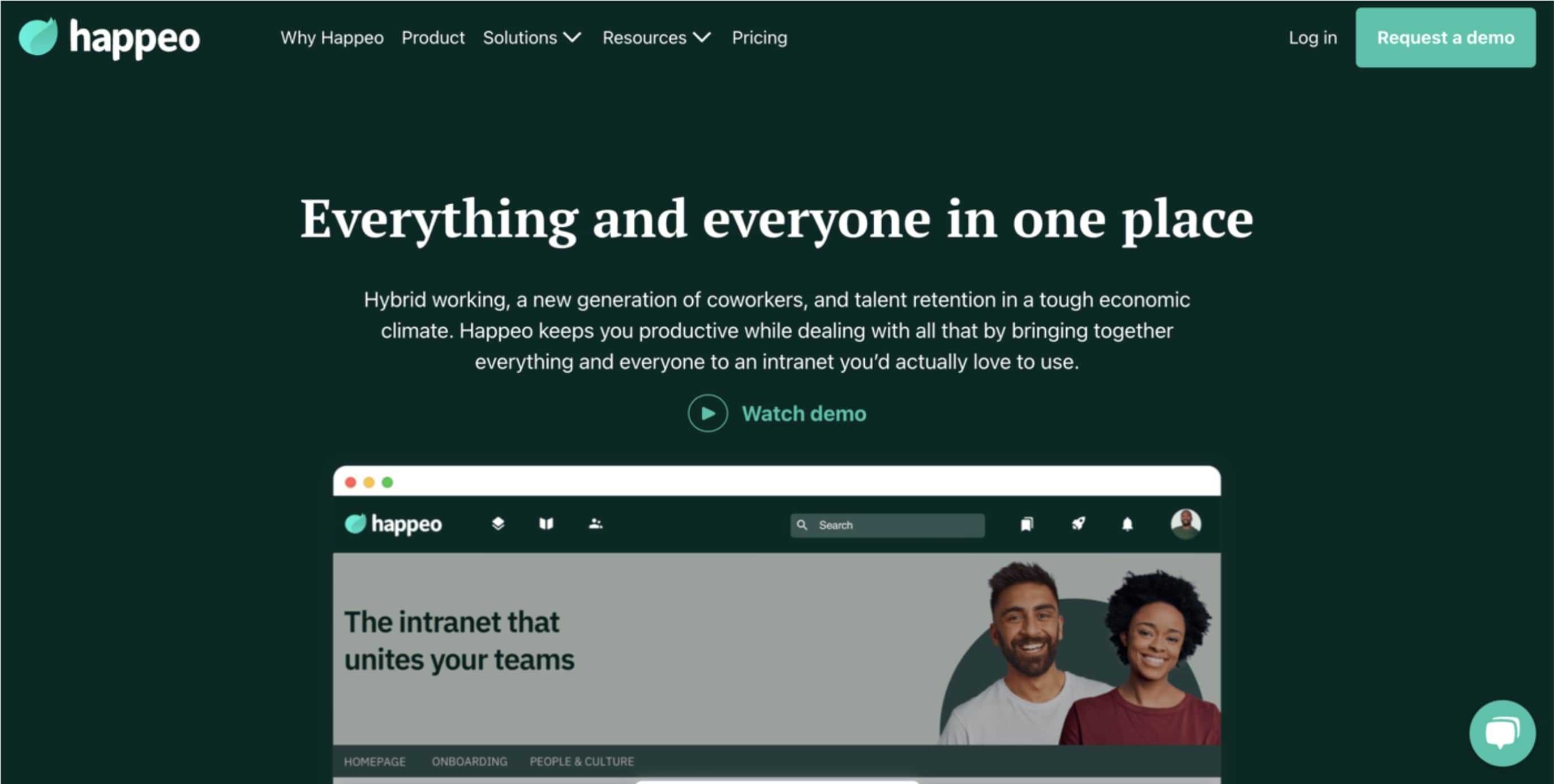
Best for: Company intranet and knowledge management
G2 score: 4.5 out of 5 stars
Happeo is a modern intranet with very powerful search features. Its ability to integrate with your organization's other systems means your employees can use a single search bar to find any information or document they need, whether it is in Google Drive, Slack, Jira or elsewhere.
Happeo also facilitates automated and user-friendly feedback processes, opening up communication channels for in-office, hybrid and remote teams alike.
Key features:
- Template-based page builder for easy knowledge sharing
- Integrations with many popular organizational tools
- Federated search across all company and HR tools
- Feedback and communication channels in one place
- Secure data storage and management
- Analytics to understand what people care about and search for the most
2. Flimp
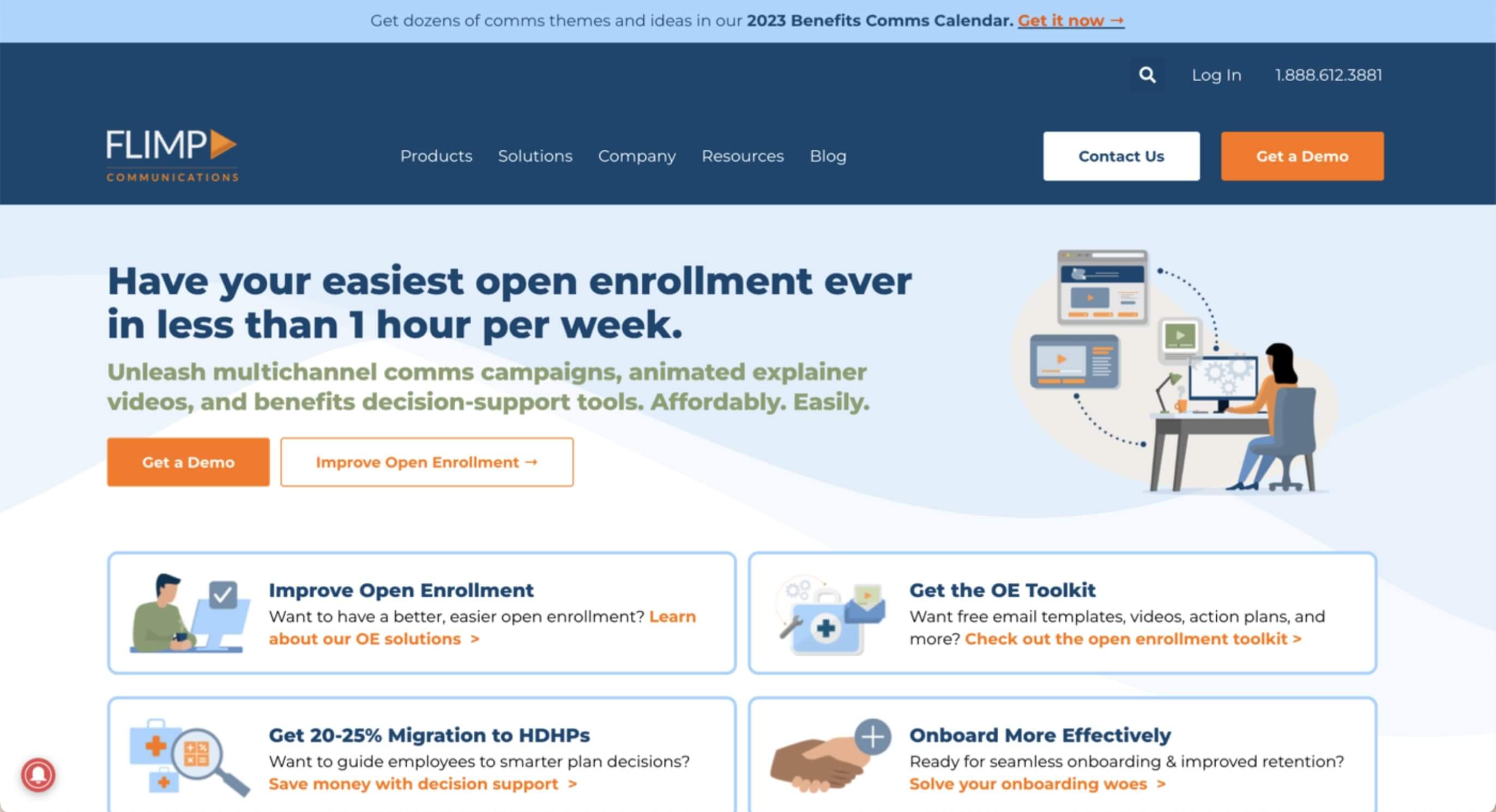
Best for: Onboarding and benefits decision support
G2 score: 4.8 out of 5 stars
Flimp is a leading HR platform for benefits and employee communication. With in-built communication solutions, decision support tools, text messaging and more, Flimp is the HR tool of choice for many corporate clients, including Fortune 500 companies.
Many HR automation tools prioritize the needs of HR teams, but Flimp is renowned for its equal focus on employee support. For instance, PLANselect is Flimp's tool that guides employees toward better health plans and making better decisions for their benefits in under five minutes.
Key features:
- Benefits decision support for employees
- Remote communication solutions for 70%+ engagement rates
- Video library and benefits training material for employees
- Automated onboarding toolkit
3. Bob
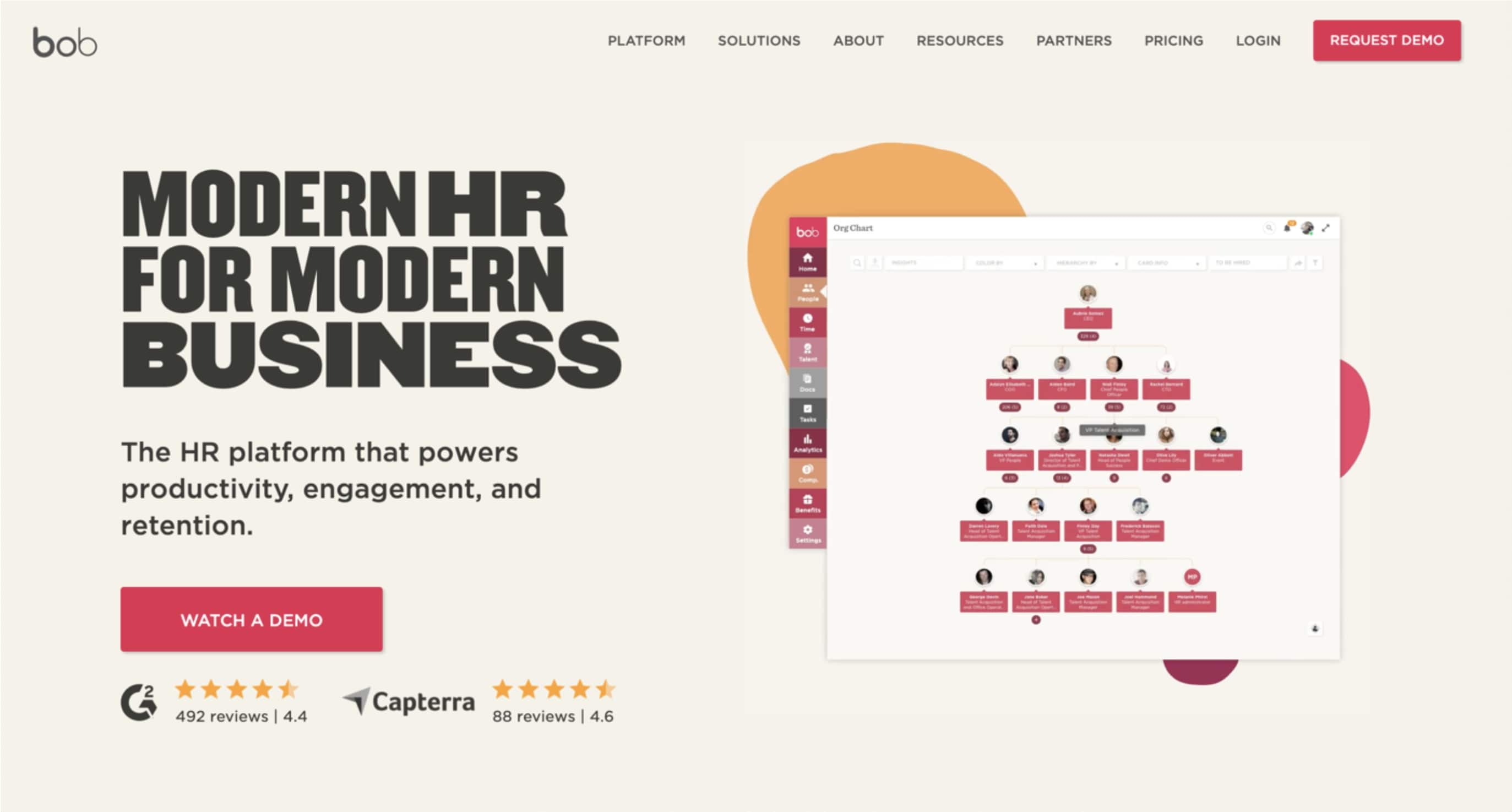
Best for: End-to-end people management for every aspect of the employee lifecycle
G2 score: 4.4 out of 5 stars
Bob is a modern HR platform that simplifies all aspects of people management. It’s known for modernizing the work experience and driving higher engagement and productivity. It also fosters a positive work culture.
Not only is Bob highly configurable — supporting on-site, remote and hybrid workplaces — it empowers HR teams to increase performance and retention rates easier.
With Bob, you can streamline everything from onboarding, performance management and payroll automatically. You can also access real-time data to make more informed strategic decisions for your people operations strategy.
Key features:
- People directory and organizational chart
- Automated HR workflows
- Time and attendance tracking
- Payroll hub
- In-built eSignatures for filling paperwork online
- Document management
4. Culture Amp
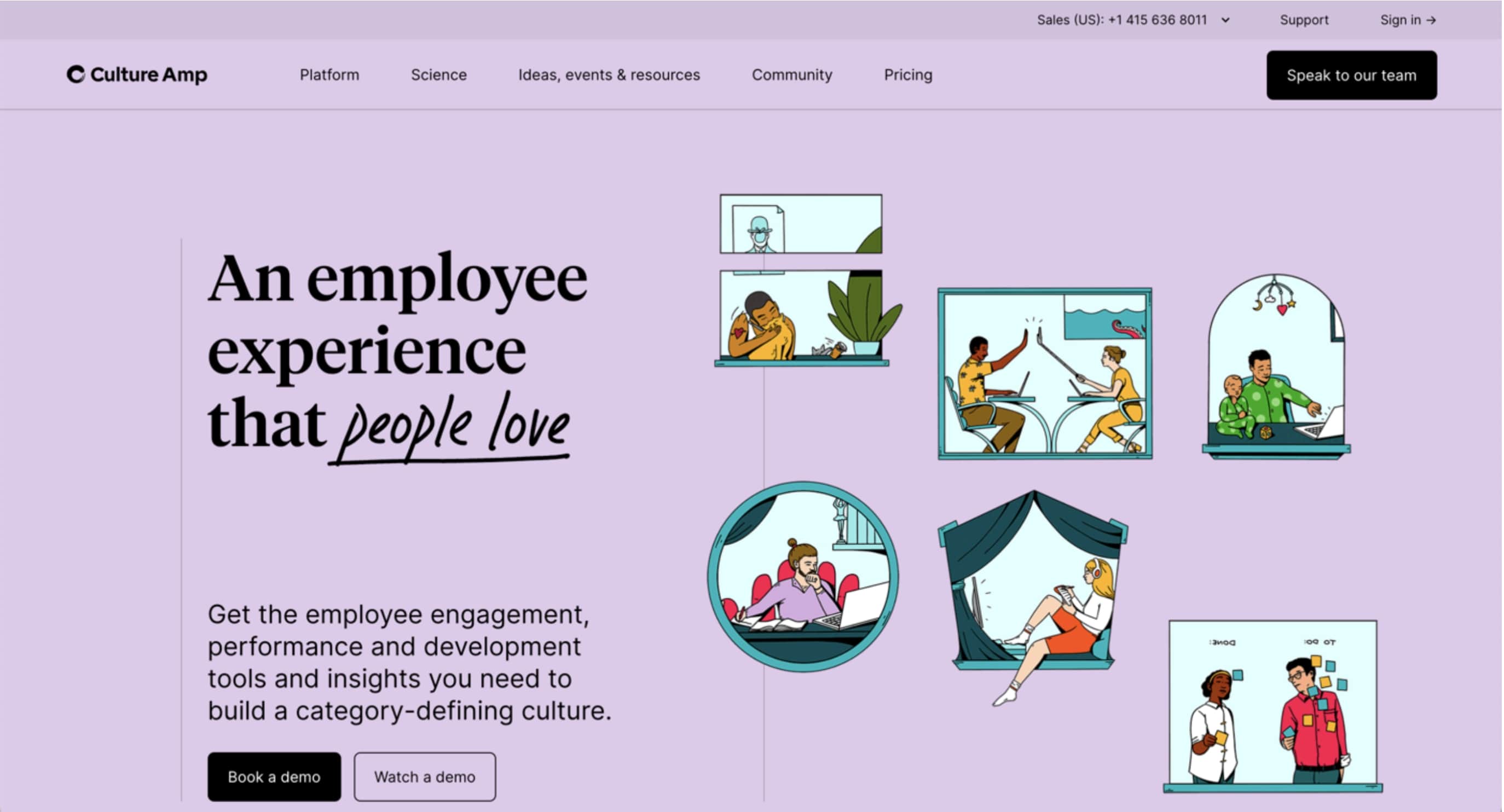
Best for: Employee experience
G2 score: 4.6 out of 5 stars
Over 80% of employees who feel their company culture is positive or has improved in the last 2 years are highly engaged. Culture Amp offers a solution for boosting the employee experience and creating a better workplace culture.
Culture Amp transforms the work lives of over 25 million employees and aims to create a better world of work. It offers tools designed to monitor and improve employee engagement, satisfaction and well-being.
You can also track company values at scale through Culture Amp’s OKR and goal-tracking capabilities, templates for 1:1 meetings, and integrated feedback solutions. There is also in-built daily coaching to develop managers and their leadership skills.
Key features:
- 30+ employee feedback survey templates
- Automated 360-degree feedback
- Performance review templates and workflows
- Goal setting and tracking for company-wide and individual goals
- Science-backed employee development tools
5. BambooHR
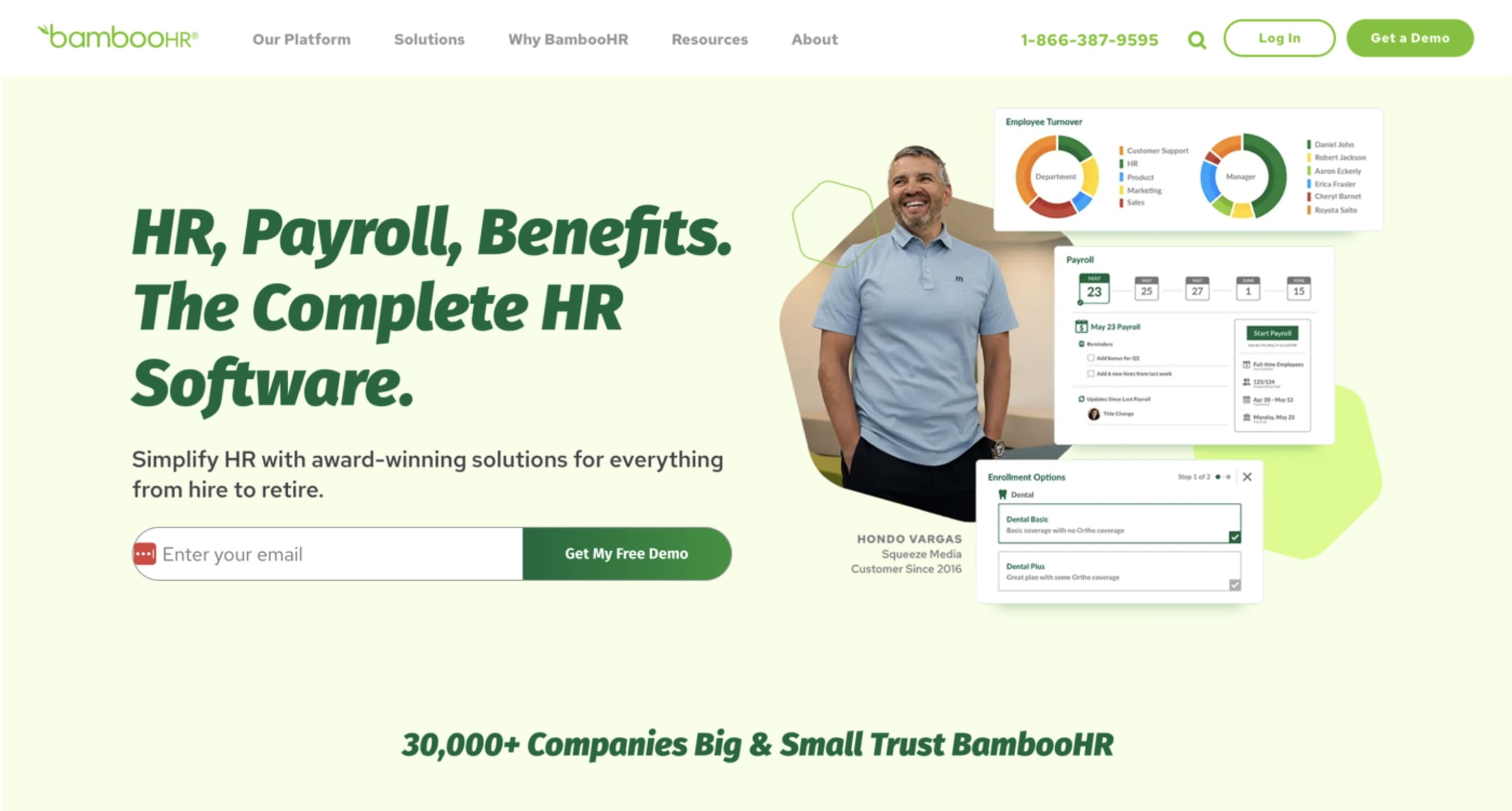
Best for: Payroll, benefits, and people management
G2 score: 4.5 out of 5 stars
BambooHR is another all-in-one HR system that enables businesses to simplify a variety of processes. From collecting and tracking signatures electronically to streamlining people operations, BambooHR can help.
Start by automating key workflows at every stage in the employee lifecycle. The main benefit of Bamboo HR is that you can run everything from a single platform, using a single data source. It also eliminates the need for any manual data entry and approval processes for time-consuming HR tasks.
Key features:
- Recruitment efficiency through applicant tracking tools
- Self-service tools so anyone can find the information they need
- In-built reporting and analytics
- Measuring employee well-being, engagement and satisfaction
- Integrations with other HR tools
- The ease with which employees can access information directly impacts their engagement and productivity. A pivotal study by McKinsey found that employees spend nearly 20% of their workweeks searching and gathering information.
Making a smooth transition to HR automation
To be effective, HR automation requires a solid strategy, technical skills, and training. For a smooth transition to HR automation, start by identifying inefficient processes that automation might improve. Consider using real-time data collection to assist in monitoring or improving goals as well.
Research available tools on the market. You can choose between specialist tools that solve a narrow range of problems or all-in-one solutions that automate many time-consuming tasks quickly and easily. Either way, you will need to spend some time learning the tool and training your team to use it effectively.
Monitor usage and progress regularly so you can ensure smooth HR operations moving forward.
Let Happeo help in your automation of HR processes
The use of HR automation tools can greatly improve the efficiency of your HR department, allowing your team to focus on achieving bigger goals and adding greater value to the company.
Many HR teams use all-in-one toolkits to handle tasks like onboarding, engagement surveys, and payroll. However, a powerful intranet that helps employees instantly find exactly what they are looking for can have equally impactful benefits for boosting productivity, motivation, and job satisfaction.
Happeo is the superior choice for HR teams that want to enhance collaboration, employee connection and feedback seamlessly. Request a demo to see what Happeo can do for your organization.


